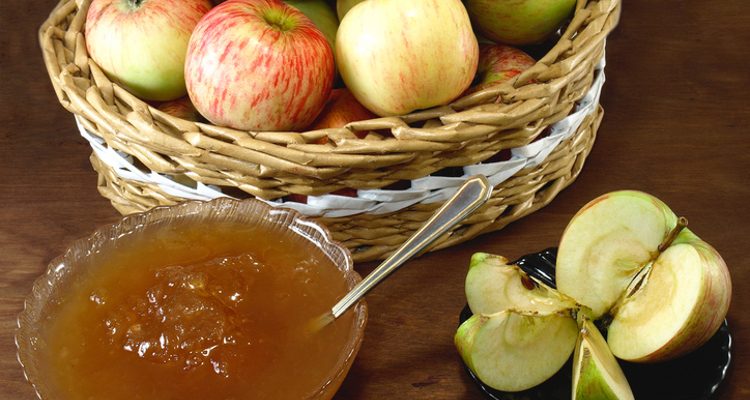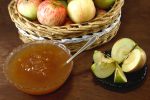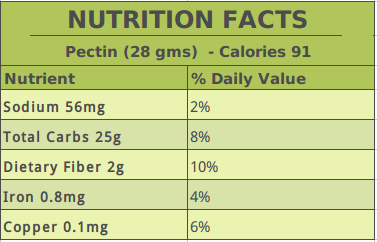
Pectin is one of those substances with a bit of mystery when it comes to food. It makes up a number of food products, but what is it? The answer to this question is even more important to those with dietary restrictions, such as vegans. So, is pectin vegan? Is pectin safe to eat at all? We’ve taken a close look at pectin to answer these questions and provide you with pectin nutrition facts and potential health benefits. We’ll also show you how to make pectin at home. By the time we’re done, we hope you will know the basics about pectin and the answer to your question that is pectin vegan.
Is Pectin Vegan? Is Pectin Safe to Eat?
Before knowing is pectin vegan or not, you first have to know what pectin is. There are two answers. Pectin is a natural fiber that can be found in a number of fruits like apples, oranges, gooseberries, and plums.
That being said, the pectin that is commonly found in our food is extracted from fruit via heat and natural acids and is usually packaged as a liquid or a dry powder.
Pectin is used as a thickening agent in many foods and food products because it bonds with most foods easily. Pectin is safe to eat in moderation (there are a few nutritional issues that we will get into), but is it vegan-friendly?
Yes. Pectin is vegan-friendly as it’s a natural fruit product. One of the main issues with pectin and veganism is that pectin is often confused with gelatin. Both are used for similar reasons and in similar foods (for example, one type of strawberry jam may use pectin and another may use gelatin).
The difference lies in the fact that gelatin is made from collagen that is taken from animals, which means that gelatin is not vegan-friendly.
That should answer the query, is pectin vegan.
Pectin Nutrition Facts
The following tables represent the nutritional value of the two most common types of pectin found in food: dry packaged pectin and liquid pectin.
As you can see from the above table, pectin does contain a certain amount of nutritional value. The pectin dry mix retains the fiber of the natural pectin and is a decent source of iron and copper.
The copper is particularly good as it’s harder to find copper as a nutrient in nature. But keep in mind these are the nutritional values of unsweetened pectin; the one with sugar is not quite as good for you.
Health Benefits of Pectin
As it is derived from fruit, pectin does have a few health benefits.
1. Gastrointestinal Health
The dietary fiber found within pectin is always beneficial as it helps with digestion. Pectin is basically a soluble fiber, which slows digestion by pulling water from your digestive tract and increasing the length of time it takes your body to absorb glucose (sugars) from food.
Soluble fibers can also bind to cholesterol in the intestines, which may reduce the levels of low-density lipoprotein (LDL) in your body.
Additionally, there are a couple other potential benefits of pectin that you may not be aware of.
2. Anti-Cancer Properties
Pectin may have cancer-preventing properties. The Journal of Nutrition published a paper in June 2011 that suggests it may help protect you from colon cancer. In this study, it was noted that pectin-based diets may protect the body from colon cancer by regulating apoptosis or programmed cell death and suppressing proliferation in rats.
3. Diabetes
There is a possibility that pectin may help with diabetes. A May 2011 study of rats published in the Journal of Medicinal Food noted that high-pectin foods helped decrease glucose levels in rats. Studies are still inconclusive for humans, but the results in rats are a good sign.
How to Make Your Own Pectin
You can make your own pectin for homemade jams and other foods, and as it turns out, it’s not particularly hard to do.
Ingredients:
- 3 pounds under-ripe apples (try Granny Smith or crab apples)
- 8 cups of water
- 3 tablespoons lemon juice
Instructions:
- Cut the apples into big chunks. Make sure to keep the skin and the seeds (don’t worry; they will be strained out later) and place them into a large pot. Add the water and lemon juice.
- Bring the mixture to a boil and then reduce the heat to a simmer. Let the mixture simmer for about 45 minutes.
- Strain the liquid through a very fine strainer to get rid of all of the solid material. The liquid should produce around 4 cups with a cloudy complexion.
- Return the liquid to the pot and bring it to a boil again. Boil for approximately five minutes or until the liquid becomes slightly syrupy. Pour the syrup into a cheesecloth or kitchen towel and tie the ends together.
- Hang the cloth over a bowl for six hours (to avoid making a mess as the excess liquid will drip).
- After six hours, take the contents of the cloth and pour them into a jar. Refrigerate the jar and voilà: homemade pectin. Just make sure that it’s kept refrigerated between uses. It should be noted that this method may also work with citrus fruit.
Pectin: Vegan-Friendly and Easy to Make
The average consumer doesn’t know a whole lot about pectin. As previously mentioned, a lot of vegans assume that it’s made out of an animal product like gelatin because the substances share similar properties and are found within similar foods.
Pectin is a natural fruit product and is vegan-friendly. It does have some nutritional value, and it’s rather easy to make at home for your own jams. It may even be able to help lower cholesterol and prevent certain cancers. Hopefully, you will remember this article the next time you head out to the supermarket and buy fruits to make your own pectin.
Related:
- Drumstick Leaves: Nutrition Facts, Health Benefits and Recipes
- Celery Juice: Nutrition Facts, Benefits, and Recipes
- All About Asparagus: Nutrition Facts, Benefits, & Side Effects
Sources:
Kulpinski, P.,“Pectin, Gelatin, What’s the Difference?” Mountain Waves, October 5, 2013; http://www.mwhealingarts.com/pectin-gelatin-whats-the-difference/, last accessed February 24, 2017.
“Pectin, unsweetened, dry mix,” Self Nutrition Data; http://nutritiondata.self.com/facts/sweets/5575/2 last accessed February 24, 2017.















